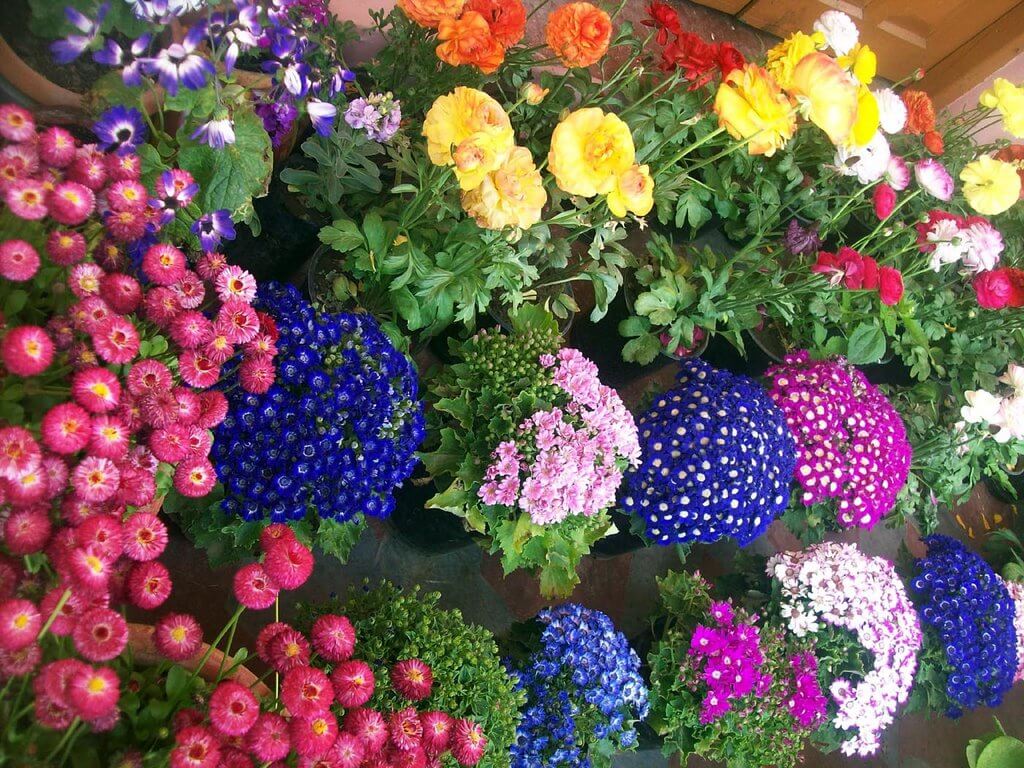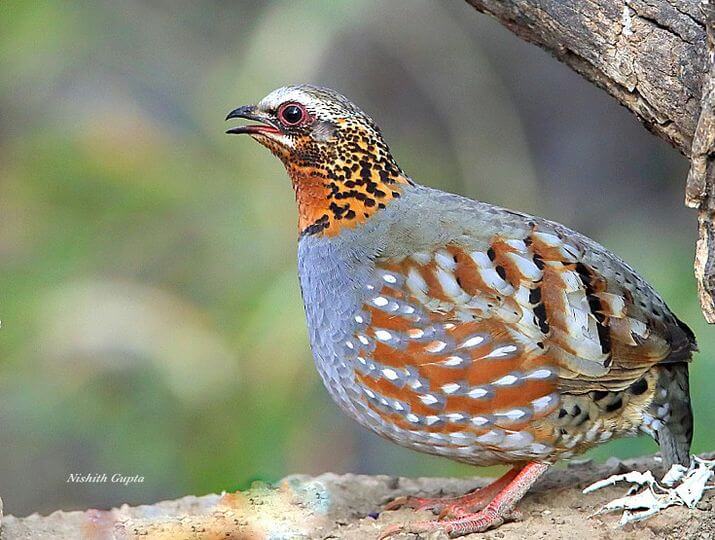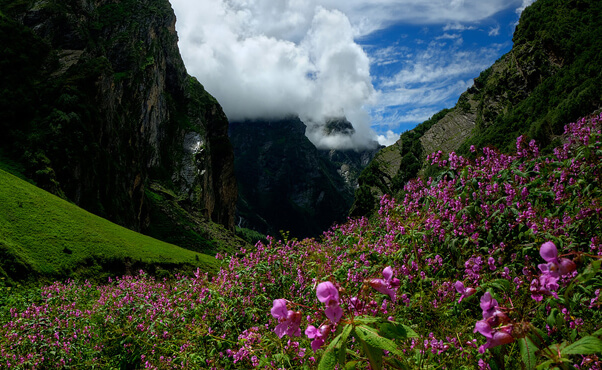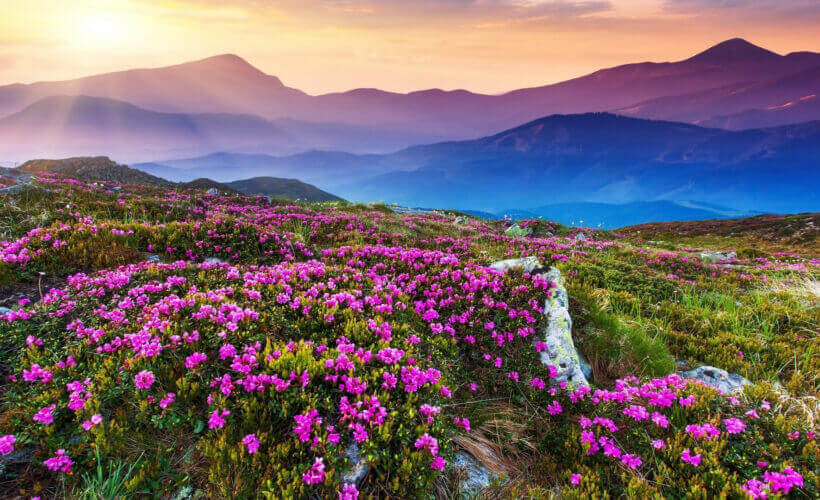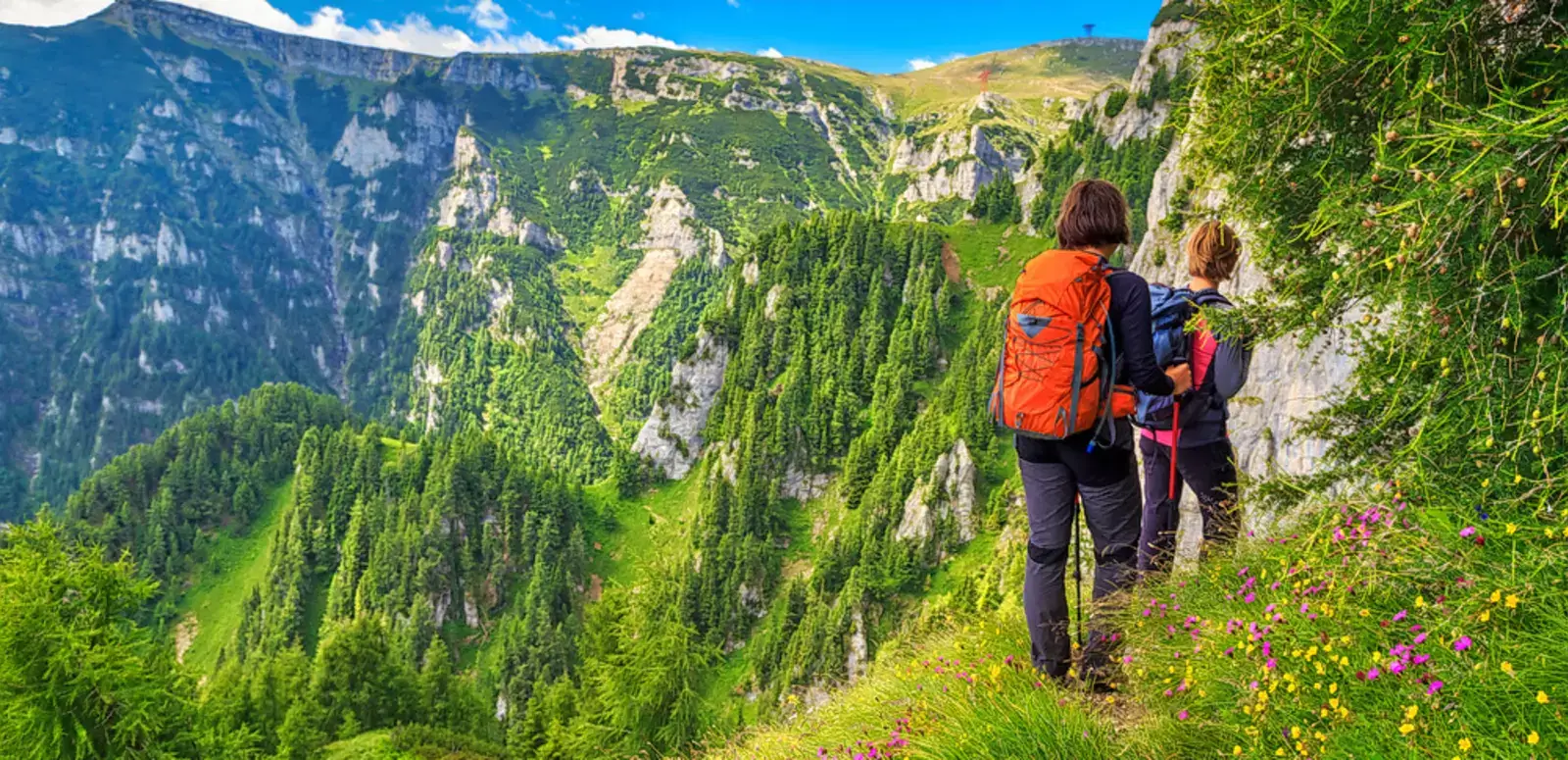Valley of flowers – seclusion havens, Nainital

In Chamoli district (near Badrinath) approximately 300 kms to the north of Rishikesh, Valley of flowers lies in Uttarakhand. In 1931, the Valley of Flowers is discovered by Mountaineer Frank S Smith and has been declared as a world heritage site for it rough natural blossoms surrounded by white peaks that lies at meeting point of Himalayan ranges, Zanskar and Western and Eastern Ghats.
It is also believed that when Lakshman was ill, Hanuman brought Sanjivani from Valley of Flowers that is famous for its unusual varieties of therapeutic herbs. It is a perfect place to lounge around the myriad number of Himalayan cascades, brooks and corrals and let the exquisiteness of place sink-in.
Fauna & Flora
To several rare and endangered species, this area is home includes Musk Deer, Flying Squirrel, Tahr, Red Fox, Blue Sheep, Asiatic Black Beer, Snow Leopard and Brown Beer.
The animals density is very low. In this national park, Himalayan Monal Pheasant and other high altitude birds can be seen among birds. Among the flowers primulas, daises, marigold, poppies, orchids and anemones are in very plentiful quantity. In this area, there are more than 500 species of higher plants. They also have medicinal value.
Nanda Devi National Park
The second highest peak in india is Nanda Devi. In the Chamoli district of Uttarakhand is Nanda Devi National Park. This park is home to several rarest and unique high-altitude flora and fauna by being the most bio diverse region in the world and is a UNESCO World Heritage Site.
The Nanda Devi National Park is the most important ecological hotspot in the world and is home to various mammals, plants, trees, birds and butterflies. Marvellous opportunities for trekking and hiking is offered in Nanda Devi National Park and is indeed an exploration fanatic dream come true.
The most challenging one is the trek to the base camp. From May 1st to October 31ST, The Nanda Devi National Park is open to the visitors for six months only in the entire year. To explore the beauty and grandeur of nature, there are ample opportunities here. In the locality of the national park is the Valley of Flowers, Hemkund Sahib and Badrinath Temple is also famous tourist endpoint.
National Park at Valley of Flowers
The Valley of Flowers in Uttarakhand is an energetic and attractive national park famous for its pastures of alpine flowers latent in Western Himalayas. In 1931, the British mountaineer changes its name to Valley of Flower from the original name Bhyundar Valley. The picturesque beauty is one of its kind different from flora and fauna. This enchanting valley is also measured as the place from where Hanuman collected Sanjeevni Buti to cure Lakshman is situated high in supercilious Himalayas of the Grahwal region.
From all over the world, millions of tourist are attracted by the beautiful mountain, running streams and verdant pastures. Grazing is completely banned while no human settlements are present inside the park. The biosphere reserve is visited but many international travellers, as it’s a UNESCO World Heritage Site.
In the part of Himalayas, seven restricted-range bird species are prevalent as it is situated in the transition zone between Eastern and Western Himalayan Flora. As it is lined up with rose bushes, barren strawberries and perfumed weeds, the journey to valley of flowers is indeed a one to remember. For all those who love tranquillity mutual with nature’s park it is must visit place.
Way towards Valley of Flowers
The Valley of Flowers cannot be travelled through any proper road. Around 17 km from Valley of Flowers is Govindghat (near Joshimath), which is nearest place and is connected to rest of the world. By trekking this distance can be covered. When you come near to Gangaria that is approximately 3 km from the valley the fragnance of flowers start coming and nomads are fascinated by the experience. If the travellers want to enter Valley of Flowers, they need to take permit from Gangaria. You can hike only during daytime while the permit is only for 3 days. Joshimath is connected to Uttarakhand and New Delhi, hence reaching Joshimath is not a harsh task.
Finest time to visit valley of flowers!
This Valley open on 1st of every June and shuts in October. If you want to visit Valley of Flowers, you can between July to September, when you can see the valley at bloom with flowers, as colourful flowers start growing in this season. With earnest days and cold nights, the climate is pleasing. You can even visit in August but it gets difficult due to landslides and heavy rainfall.
It remains covered with snow most of the year as it is covered by the Himalayan Mountains. If you visit during late summer months, you can witness heavy rainfall and dense fod. You can only visit the Valley only in daytime between 7:00 AM to 2:00 PM and you have to leave before 5:00 PM. hiking here overnight is restricted.













